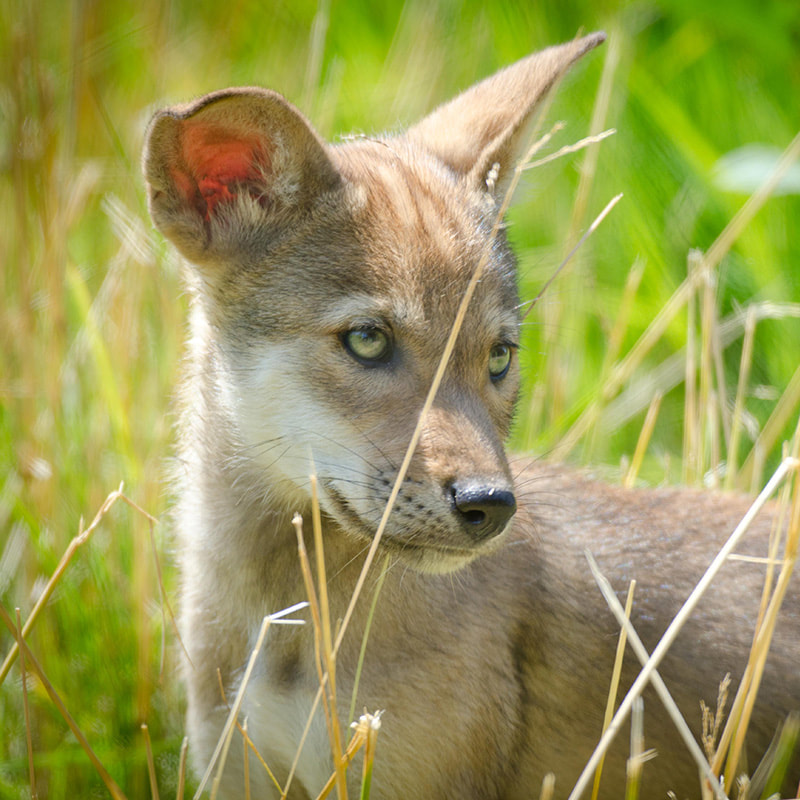American Red Wolf
Canis rufus
Howling for Hope: A Declining Population
In 2019, the Centers for Species Survival, in collaboration with Endangered Wolf Center and Running Wild Media,
launched a film project, Resilience: Story of the American Red Wolf, highlighting the dire need to stand up for the Red Wolf.
The film emphasizes the species’ important role in our ecosystem and how their survival will benefit humans.
launched a film project, Resilience: Story of the American Red Wolf, highlighting the dire need to stand up for the Red Wolf.
The film emphasizes the species’ important role in our ecosystem and how their survival will benefit humans.
The American Red Wolf – a distinctly different species from the grey wolf – is the rarest wolf in the world, expected to go extinct in less than a decade without substantial intervention.
The only large carnivore exclusively native to the United States, the American Red Wolf historically roamed an expansive range from Texas to New York. Less than 20 of these wolves exist in the wild today. The remaining wild Red Wolves live in a reintroduced population in the Alligator River Wildlife Refuge, a small territory in North Carolina. Although several factors contributed to the rapid decline of the Red Wolf's wild population, humans played a significant role as the spread of misinformation based on unfounded fears resulted in the demise of these shy and graceful canids.
The only large carnivore exclusively native to the United States, the American Red Wolf historically roamed an expansive range from Texas to New York. Less than 20 of these wolves exist in the wild today. The remaining wild Red Wolves live in a reintroduced population in the Alligator River Wildlife Refuge, a small territory in North Carolina. Although several factors contributed to the rapid decline of the Red Wolf's wild population, humans played a significant role as the spread of misinformation based on unfounded fears resulted in the demise of these shy and graceful canids.
C2S2 American Red Wolf Program
As an apex predator, the American Red Wolf has a tremendous impact on the environment in which it lives. Studies support the species' role in enhancing diversity, balance, and stability of the plants and animals in their native ecosystems.
C2S2 Affiliate Member Endangered Wolf Center was one of the first facilities to breed American Red Wolves in captivity in 1981. Since then, more than 40 facilities have joined the cause. Our collective goal is to grow the captive population, increase conservation breeding program participation and space, progress with husbandry and research priorities, and conduct positive outreach for this misunderstood species.
As an apex predator, the American Red Wolf has a tremendous impact on the environment in which it lives. Studies support the species' role in enhancing diversity, balance, and stability of the plants and animals in their native ecosystems.
C2S2 Affiliate Member Endangered Wolf Center was one of the first facilities to breed American Red Wolves in captivity in 1981. Since then, more than 40 facilities have joined the cause. Our collective goal is to grow the captive population, increase conservation breeding program participation and space, progress with husbandry and research priorities, and conduct positive outreach for this misunderstood species.
CharacteristicsMammals Pack animals |
Physical AttributesReddish-brown coat Tall pointed ears 50 lbs. average |
HabitatForests Coastal Prairies Swamps |
Native RangeSoutheastern U.S. |
Birthing & GestationPups born between late April- early May 2-6 pups on avg. Gestation: 60 days |
DietWhite-tailed deer Raccoons Small mammals |
US Fish and Wildlife Service GrantC2S2 was awarded the 2019 and 2020 United States Fish and Wildlife Service Recovery Challenge Grant toward the construction of red wolf conservation breeding space. Funds were sub-granted through a peer-review process to build 20 new red wolf enclosures to accommodate multi-generation groups. Construction of additional enclosures is critical to creating a sustainable future for American red wolves. The enclosures created the space needed to increase the conservation breeding population prior to reintroduction into the wild. |
Resilience: Story of the American Red WolfC2S2, in collaboration with Endangered Wolf Center and the award-winning filmmaking team, Running Wild Media, are proud to have launched a film project highlighting the dire need for American red wolf conservation. Without direct intervention, they are expected to go extinct in less than a decade.
The film emphasizes the species’ important role in our ecosystem and how their survival will benefit humans. The team worked with US Fish and Wildlife Biologists and leaders in red wolf management to capture compelling footage of an animal that is seldom seen and even more rarely photographed in the wild. The film, viewable at the top of this page, is a free and inspirational conservation education tool for anyone who wants to help spread the word and learn to advocate powerfully for this endangered species. |
Alpha Pack Leaders
Beta Wolf Partners
Wolf Guardians
AAZK Little Rock Chapter | AAZK Omaha Chapter | Northeastern Wisconsin Zoo | Wolf Haven International | Zoo Knoxville
Thank you for your support!
Your donation can ensure that future generations have the opportunity to cherish this national treasure.
While the red wolf has faced immeasurable challenges, its future can be bright.
While the red wolf has faced immeasurable challenges, its future can be bright.







